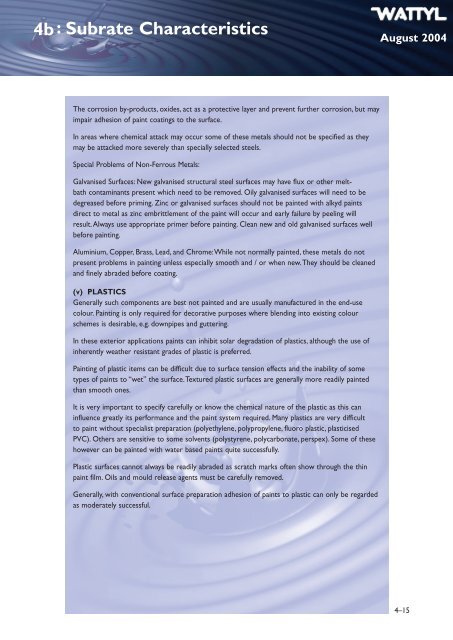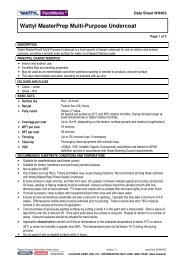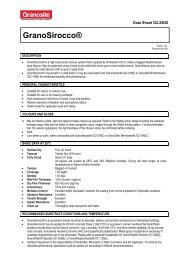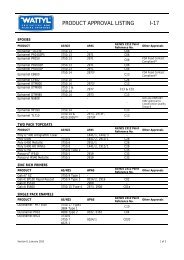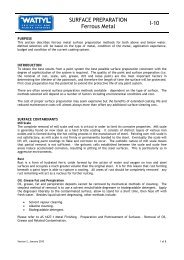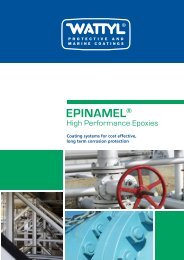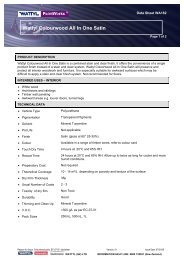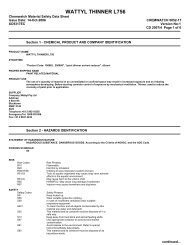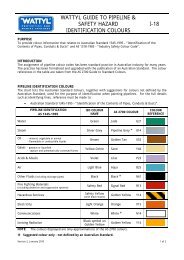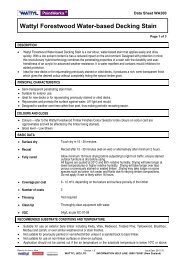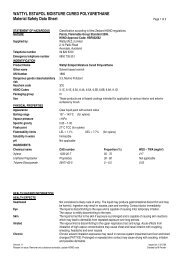Surface Preparation
Surface Preparation
Surface Preparation
Create successful ePaper yourself
Turn your PDF publications into a flip-book with our unique Google optimized e-Paper software.
4b :Subrate CharacteristicsAugust 2004The corrosion by-products, oxides, act as a protective layer and prevent further corrosion, but mayimpair adhesion of paint coatings to the surface.In areas where chemical attack may occur some of these metals should not be specified as theymay be attacked more severely than specially selected steels.Special Problems of Non-Ferrous Metals:Galvanised <strong>Surface</strong>s: New galvanised structural steel surfaces may have flux or other meltbathcontaminants present which need to be removed. Oily galvanised surfaces will need to bedegreased before priming. Zinc or galvanised surfaces should not be painted with alkyd paintsdirect to metal as zinc embrittlement of the paint will occur and early failure by peeling willresult. Always use appropriate primer before painting. Clean new and old galvanised surfaces wellbefore painting.Aluminium, Copper, Brass, Lead, and Chrome: While not normally painted, these metals do notpresent problems in painting unless especially smooth and / or when new. They should be cleanedand finely abraded before coating.(v) PLASTICSGenerally such components are best not painted and are usually manufactured in the end-usecolour. Painting is only required for decorative purposes where blending into existing colourschemes is desirable, e.g. downpipes and guttering.In these exterior applications paints can inhibit solar degradation of plastics, although the use ofinherently weather resistant grades of plastic is preferred.Painting of plastic items can be difficult due to surface tension effects and the inability of sometypes of paints to “wet” the surface. Textured plastic surfaces are generally more readily paintedthan smooth ones.It is very important to specify carefully or know the chemical nature of the plastic as this caninfluence greatly its performance and the paint system required. Many plastics are very difficultto paint without specialist preparation (polyethylene, polypropylene, fluoro plastic, plasticisedPVC). Others are sensitive to some solvents (polystyrene, polycarbonate, perspex). Some of thesehowever can be painted with water based paints quite successfully.Plastic surfaces cannot always be readily abraded as scratch marks often show through the thinpaint film. Oils and mould release agents must be carefully removed.Generally, with conventional surface preparation adhesion of paints to plastic can only be regardedas moderately successful.4–15


